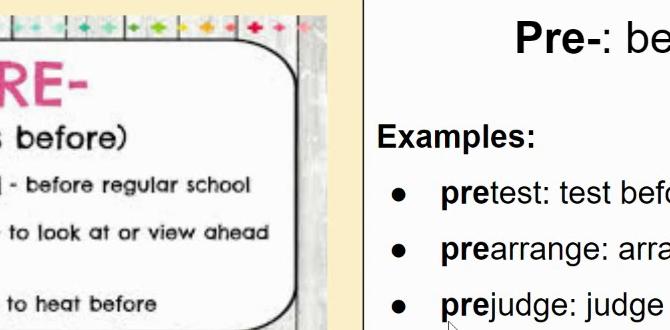Choosing the right no-mar tip means protecting your delicate surfaces from accidental dings and scratches while you work. A good no-mar tip prevents tool marks, saving you time and costly repairs. This guide will show you exactly how to find the perfect one for your needs.
Hey there, DIYers and woodworkers! Jack Shaffer here, your go-to guy for all things nailers and tools. Ever been working on a project, maybe assembling some beautiful furniture or putting up some trim, and worried about leaving unsightly marks on your wood? It’s a super common concern, especially when you’re working with softer woods or finished surfaces. Those little dents and scratches? They can really take away from your hard work. The good news is, there’s a simple yet genius solution: the no-mar tip. It’s a small attachment that can make a big difference in the quality of your finished projects. Stick around, and I’ll guide you through everything you need to know to pick the perfect no-mar tip, ensuring your projects look as good as you imagined them to be.
Table of Contents
What Exactly is a No-Mar Tip and Why Do You Need One?
Think of a no-mar tip as a protective bumper for your nailer. Most nail guns, especially those used for trim work or upholstery, have a metal nose that drives the fastener. While effective, this metal can, unfortunately, leave dents or marks on softer woods or pre-finished surfaces. That’s where the no-mar tip comes in. It’s usually made of a soft, non-abrasive material like rubber or a special plastic that cushions the contact between the nail gun’s nose and your workpiece.
Using a no-mar tip is like putting a soft cloth between a hammer and a finished piece of furniture before you tap something into place. It absorbs the impact, preventing any accidental marring. This is incredibly valuable when you’re working with:
- Softwoods: Woods like pine, fir, or cedar are easily dented.
- Veneered Plywood: The thin top layer of veneer can be damaged by direct metal-to-surface contact.
- Pre-finished Materials: Think about cabinetry, pre-painted trim, or furniture pieces. You want to keep them looking pristine.
- Delicate Materials: Even some plastics or composites can benefit from this extra layer of protection.
Essentially, if you care about the surface finish of your project, a no-mar tip is an essential accessory. It’s a small investment that can save you a lot of time and frustration trying to repair or cover up accidental damage. It helps maintain the professional look of your work, which is always the goal, right?
Types of No-Mar Tips and Their Applications
No-mar tips aren’t a one-size-fits-all deal. They come in various designs and materials, each suited for different tasks and nailer types. Understanding these differences will help you make the best choice for your specific needs.
Universal No-Mar Tips
These are designed to fit a wide range of nail guns and are a great starting point for many DIYers. They often have a flexible design that can adapt to slightly different nose pieces. While convenient and affordable, they might not offer the absolute best fit or protection compared to model-specific options.
Model-Specific No-Mar Tips
Many nailer manufacturers offer no-mar tips specifically designed for their tools. These are usually a perfect fit and provide the most secure attachment and optimal cushioning. If you know your nailer’s model number, looking for a direct match is often the best route for guaranteed performance.
Specialty No-Mar Tips
Beyond the standard types, you might find specialty tips designed for very specific applications. For example, some might have a particularly soft rubber compound for incredibly delicate surfaces, while others might have a unique shape to grip better on odd angles. These are less common for general DIY but can be invaluable for professional or highly specialized use.
Material Matters: Rubber vs. Plastic
The material of the no-mar tip is crucial. Most are made from:
- Rubber: Offers excellent cushioning and grip. It’s flexible and can conform well to surfaces. However, some rubber can be susceptible to degradation from oils or solvents over time.
- Plastic: Often made from durable, non-marking polymers. These can be very long-lasting and resistant to chemicals. The level of cushioning might vary depending on the specific plastic compound used.
When choosing, consider the types of materials you’ll be working with most often. For general woodworking and trim, a good quality rubber tip is usually a safe bet.
Key Factors to Consider When Choosing Your No-Mar Tip
So, you’re ready to pick out a no-mar tip. What should you be looking for? It’s not just about grabbing the first one you see. A little thought upfront makes all the difference.
1. Nailer Compatibility
This is number one! Your no-mar tip absolutely must fit your nail gun. Most tips attach to the nose of the nailer. Check the following:
- Nailer Model: As mentioned, knowing your specific nailer model (e.g., DeWalt DCN660, Paslode IM250A LI) is the easiest way to find a compatible tip.
- Nose Piece Dimensions: If a model-specific tip isn’t available, you might need to measure the diameter and length of your nailer’s nose piece to find a universal tip that fits snugly.
- Attachment Method: How does the tip attach? Does it clip on, slide over, or secure with a screw? Ensure the attachment method is secure and won’t pop off during use.
A tip that’s too loose won’t stay in place and could even fall off mid-job. A tip that’s too tight might be difficult to attach or could even affect the nailer’s performance.
2. Material Softness and Durability
The “no-mar” özelliğindeyani the no-mar quality, depends heavily on the material. You need a tip that’s soft enough to cushion the impact but durable enough to withstand repeated use without wearing down quickly or leaving its own marks.
- Softness: For very delicate finishes, you want a softer rubber or a specialized polymer that offers maximum give.
- Durability: Look for tips made from high-quality, resilient materials. Cheaper, brittle plastic tips can crack or break. Look for reviews that mention longevity.
Think about how often you’ll use it. If it’s for occasional DIY projects, a standard rubber tip will likely be fine. If you’re a professional or use your nailer daily, investing in a more durable, perhaps even a model-specific, tip is wise.
3. Grip and Stability
A no-mar tip should stay put on the nose of your nailer. If it slides around, it might not align properly and could be more of a hindrance than a help. Some tips have internal ribbing or a tighter-fitting design to ensure they grip securely.
Consider how you hold your nailer. Do you need a tip that offers a bit of extra texture for your hand? Some no-mar tips are designed with ergonomics in mind, though this is less common and more of a bonus feature.
4. Ease of Installation and Removal
You don’t want a no-mar tip that requires a wrestling match to get on or off. It should attach and detach relatively easily. This is especially important if you need to switch between using the tip and using the nailer without it, for instance, if you’re working on different parts of a project.
Many universal tips simply slide over the nose. Model-specific tips might click into place. If installation is fiddly, you’re less likely to use it consistently.
5. Intended Project Type
What kind of projects do you primarily do? This can influence your choice:
- Finish Carpentry: For installing trim, baseboards, or crown molding, a smooth, non-marking tip is crucial for pristine results.
- Upholstery: For furniture work, where fabric and delicate wood are involved, a soft, conforming tip is ideal.
- Cabinetry: Building or installing cabinets requires precision. A no-mar tip prevents damage to the often pre-finished surfaces.
- Framing: Generally, framing nailers are much rougher and don’t often use no-mar tips as the fasteners are hidden and the wood is usually rough construction-grade.
While a good all-around no-mar tip can handle various tasks, some tasks might benefit from a slightly specialized design or material. For example, a tip designed for super-fine detail work might be different from one meant for general trim.
How to Attach and Use Your No-Mar Tip Safely
Getting your no-mar tip on your nailer is usually straightforward, but safety is always the number one priority. Let’s walk through it.
Step-by-Step Attachment and Use
- Always Disconnect Power: Before attaching or removing any accessory, ALWAYS disconnect the power source to your nailer. For pneumatic nailers, this means disconnecting the air hose. For cordless or corded electric nailers, remove the battery or unplug it from the wall. This is non-negotiable for safety.
- Inspect Your Nailer’s Nose: Ensure the nose piece of your nailer is clean and free from debris. This will help the no-mar tip fit properly.
- Align the No-Mar Tip: Position the no-mar tip over your nailer’s nose. If it’s a model-specific tip, it should align with a specific slot or shape. For universal tips, identify the correct orientation for a snug fit.
- Attach Securely: Gently but firmly push or slide the no-mar tip onto the nose piece. It should fit snugly and not wobble. If it comes with a clip or securing mechanism, engage it as per the manufacturer’s instructions.
- Reconnect Power: Once the tip is securely attached, you can reconnect the power source (air hose, battery, or plug).
- Test Fire (Safely!): Before firing at your project, do a test fire into a scrap piece of wood with the nailer not pressed against any surface. This ensures the tip is securely attached and the nailer is functioning correctly.
- Position and Fire: When working on your project, place the tip of the nailer, with the no-mar tip attached, firmly against the workpiece. Apply consistent pressure and pull the trigger to drive the fastener. The no-mar tip will act as a cushion.
- Removal: After you’re done, remember to disconnect the power source again before removing the no-mar tip. Gently pull it off the nose piece.
Safety Tips for Using No-Mar Tips
- Never Force It: If a no-mar tip doesn’t fit easily, don’t force it. You might have the wrong tip or there might be an obstruction.
- Check for Wear: Periodically inspect your no-mar tip for cracks, tears, or excessive wear. A damaged tip might not offer adequate protection or could even detach unexpectedly.
- Keep it Clean: Wipe down your no-mar tip to remove sawdust or debris after use. This helps maintain its non-marking properties and its lifespan.
- Use the Right Nailer for the Job: A no-mar tip is an accessory, but it does not replace the need for using the correct type of nailer for your project. For example, don’t try to use a finish nailer for heavy framing.
- Always Wear Eye Protection: This is a golden rule for any power tool use. Flying debris, even from a soft tip, can cause injury. Learn more about safety when using nail guns from resources like the Occupational Safety and Health Administration (OSHA).
Troubleshooting Common No-Mar Tip Issues
Even with the best planning, you might run into a snag. Here are a few common issues and how to sort them out.
Problem: The No-Mar Tip Isn’t Staying On
Solution: This is usually a fitment issue. Try a different brand or model-specific tip. If it’s a universal tip, ensure you’ve chosen the correct size and that the nose piece itself isn’t damaged, which might prevent a snug fit.
Problem: The No-Mar Tip is Still Leaving Marks
Solution:
- Material Too Hard: The tip might be made of a material that’s not soft enough for your specific workpiece.
- Too Much Pressure: You might be pressing the nailer too hard into the surface, overwhelming the cushioning.
- Damaged Tip: Check for cracks or embedded debris in the tip that could be causing the marring.
- Wrong Tip for the Job: Some very soft woods or delicate finishes might require an even softer tip, or perhaps a different approach altogether (like pilot holes and manual driving, though that’s less efficient).
Problem: The Nailer’s Performance Seems Affected
Solution: Ensure the no-mar tip isn’t blocking the nail exit or causing the driver blade to bind. Most well-designed tips shouldn’t interfere. If it feels like it’s affecting depth control or nail collation, you might have a compatibility issue or the tip might be designed in a way that impedes the tool.
Problem: The No-Mar Tip is Difficult to Install or Remove
Solution: Double-check that you have the correct tip for your nailer model. If it’s a universal tip, ensure you’re not trying to force it onto a nose piece that’s too large or has an unusual shape. A little gentle wiggling might help, but never use excessive force.
Comparing Popular No-Mar Tip Options
To give you a better idea of what’s out there, let’s look at a few common types of no-mar tips you might encounter. Keep in mind that specific model numbers, pricing, and availability can change.
| Brand/Type | Material | Pros | Cons | Best For |
|---|---|---|---|---|
| Generic Universal Rubber Tips | Rubber | Affordable, widely available, fits many tool types. | Fit can vary, may not be as durable, might wear out faster. | Occasional DIY, general use, when exact nailer model isn’t known. |
| DeWalt Specific No-Mar Tip (e.g., for DC608K, DC616K) | Rubber or Polymer | Excellent fit, designed for specific tool performance, good durability. | Only fits specific DeWalt models, can be more expensive. | DeWalt finish or brad nailer users who want a perfect match. |
| Paslode Specific No-Mar Tip (e.g., for Cordless Framers/Finishers) | Rubber | High-quality materials, secure fit, reliable performance. | Tool-specific, can be pricey, might require ordering. | Paslode nailer owners needing a reliable, integrated accessory. |
| Senco Specific No-Mar Tip | Rubber | Designed for Senco tools, good protection, durable. | Limited compatibility, ensure you have the right Senco series number. | Senco users looking for an OEM quality accessory. |
| Aftermarket Specialty Tips | Various (e.g., high-durometer rubber, specialized plastics) | Can offer superior cushioning or durability for specific needs. | Compatibility can be hit-or-miss, research is key, might be expensive. | Users with very specific, delicate material requirements or looking for enhanced performance. |
When looking at these, always cross-reference the tip’s description with your nailer’s manual or manufacturer’s website. It’s better to spend a little extra time confirming compatibility than to buy a tip that doesn’t work.
Where to Buy No-Mar Tips
Finding the right no-mar tip is straightforward. Here are the most common places to look:
- Tool Retailers: Large home improvement stores (like Home Depot, Lowe’s) and dedicated tool stores will carry a selection of no-mar tips, often including OEM versions for popular nailer brands.
- Online Retailers: Websites like Amazon, Acme Tools, Tools USA, and directly from tool brand websites are great sources. You’ll find a wider variety here, including aftermarket options. This is often the best place to find model-specific tips.
- Manufacturer Websites: Directly visiting the website of your nail


